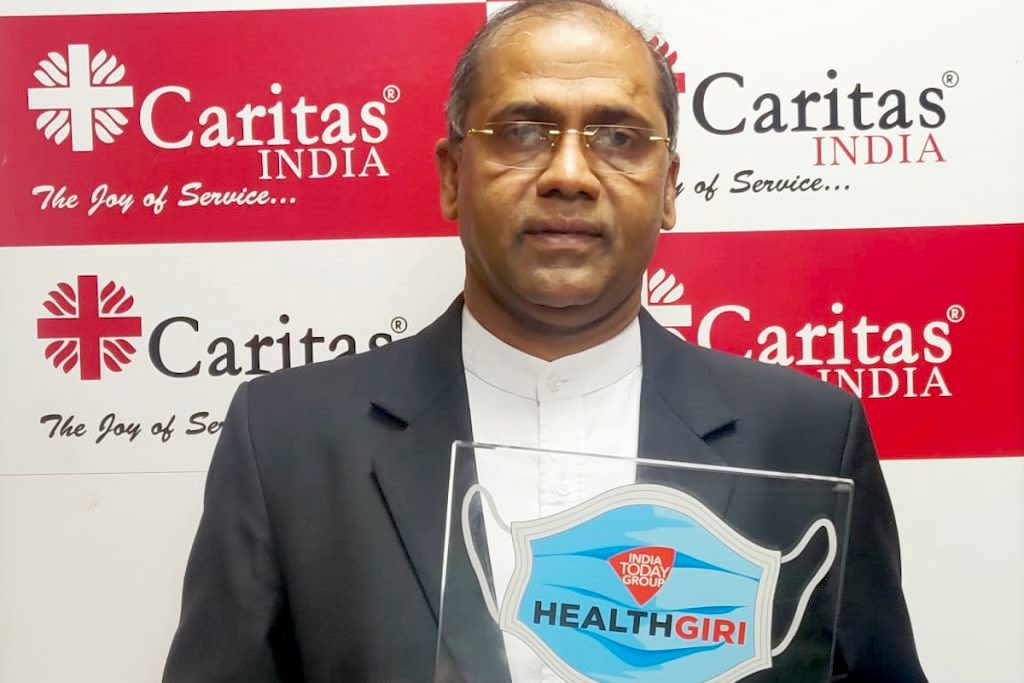“We didn’t die from COVID, but certainly, we are all dying from poverty”
Seva Kendra Silchar, a Catholic social service initiative is empowering women in India to cultivate their way out of poverty and starvation
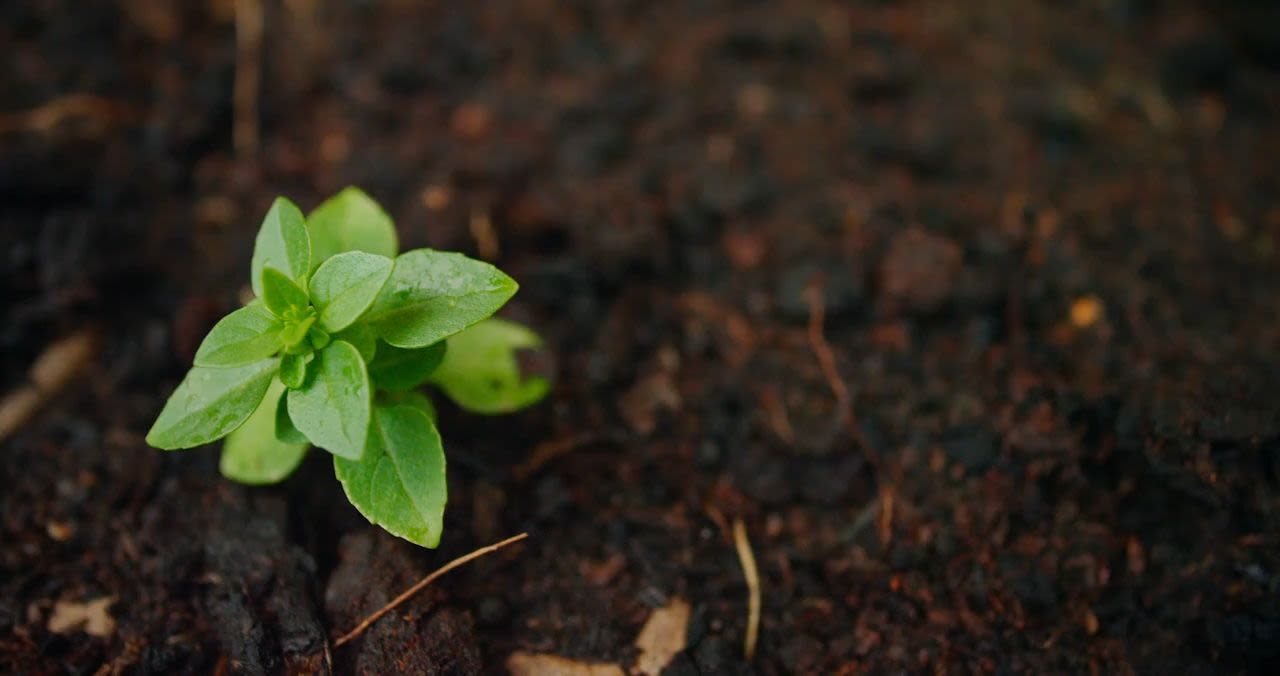
The steep hills of Kalian village in the northeastern state of Assam in India are brimming with green foliage and vegetation. The region is also known for its wildlife, archeological sites, and tea plantations.
In the midst of one such hillock is a dwelling that belongs to Kache Derapi, a 37-year-old woman, a mother of three children — two boys and a three-year-old girl — and her husband, who lost his job because of the pandemic.
Wearing a smile on her face, Derapi sings a melancholic folk song while she sprinkles water on the betel nut (areca palm) saplings that she is preparing for sale in the local market.
It was just a year ago when her husband, who used to be a daily wage laborer earning less than US$100 a month, lost his job after the factory where he was working shut down due to the lockdown brought about by the coronavirus pandemic.
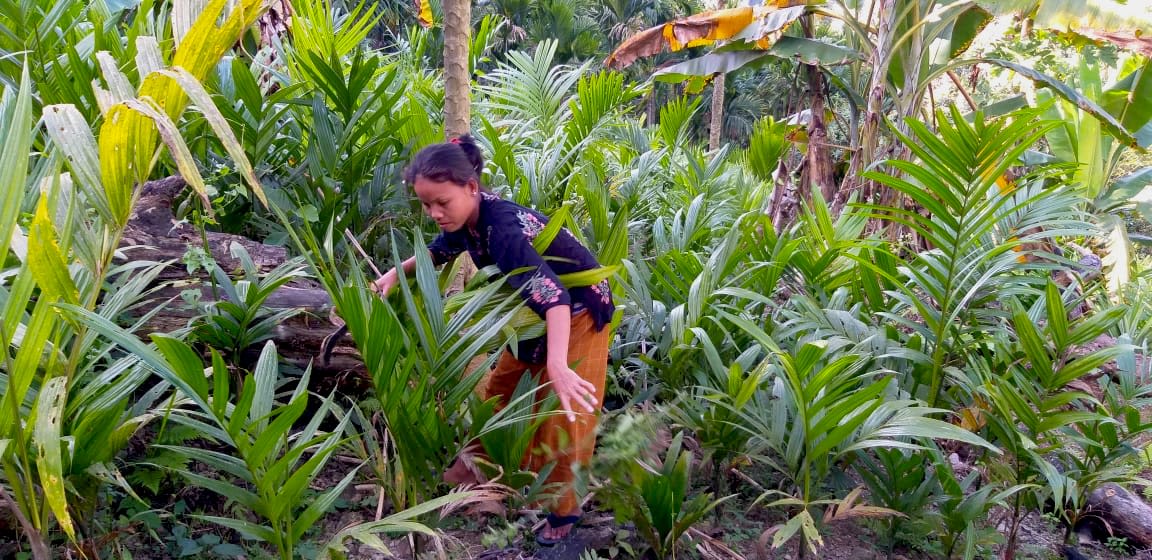
Kache Derapi tending to her betel nut saplings. (Photo by Peerzada Ummer / LiCAS.news)
Kache Derapi tending to her betel nut saplings. (Photo by Peerzada Ummer / LiCAS.news)
Derapi admits that she found it difficult to sustain the family, especially with a husband who seemed to have lost the drive to work and starts and ends the day staring at nowhere.
“We didn’t die from COVID, but certainly, we are all dying from poverty,” the woman tells LiCAS News in an interview.
She says that in the first three months of the pandemic, “I sustained the family by selling the jewelry I got at the time of my marriage.”
Days turned to weeks then to months, and the money started to dwindle. Derapi became desperate with the thought that soon they might starve.
“I was ready to work as a maid, but due to COVID people were reluctant to even allow maids inside their homes,” she says.
“The markets were shut, roads were desolate, and incomes were draining. Home was becoming our grave,” says Derapi.
Impact of pandemic
Data from Azim Premji University in south India show that 37 percent of farmers in the country were unable to harvest at the height of the pandemic, while an estimated 37 percent of the harvest was sold at reduced prices.
The study also notes that 77 percent of households surveyed in the country consumed less food during nationwide lockdowns in 2020 and 2021.
The Centre for Monitoring Indian Economy, the country’s leading independent economic think-tank, reported that unemployment was at 22 percent in 2021.
In the state of Assam, the lockdown had a wide scale impact on agriculture.
Government data show that 75 percent of Assam's 31 million population depends on agriculture, making farming the primary source of income.
The region’s agriculture, however, declined by 69 percent due to the pandemic and the subsequent lockdown.
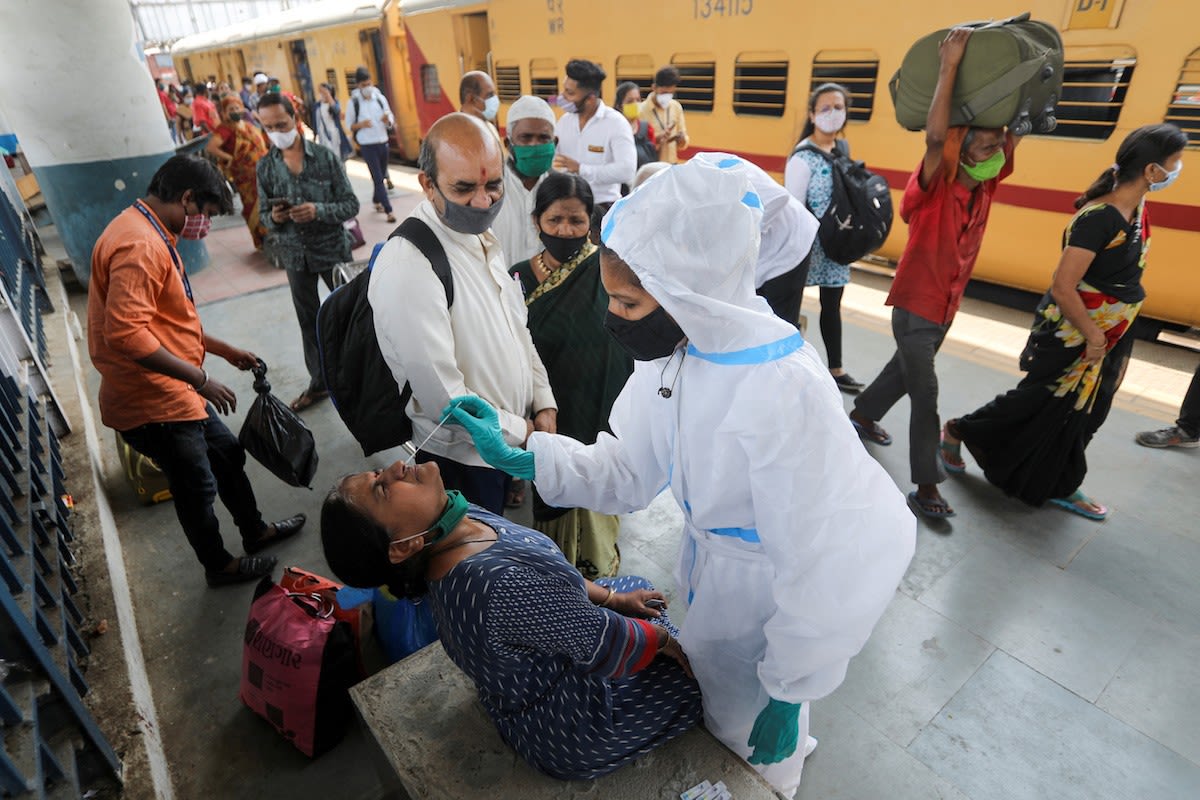
A health worker in personal protective equipment collects a swab sample from a woman during a rapid antigen testing campaign for COVID-19, at a railway station platform in Mumbai, India, March 17, 2021. (Photo by Francis Mascarenhas/Reuters)
A health worker in personal protective equipment collects a swab sample from a woman during a rapid antigen testing campaign for COVID-19, at a railway station platform in Mumbai, India, March 17, 2021. (Photo by Francis Mascarenhas/Reuters)
The Indian government started to impose a nationwide lockdown on March 24, 2020, in an attempt to contain the spread of the virus.
The lockdown wreaked havoc on migrant workers who had to flee home in hordes.
More than a hundred thousand people reportedly died during the first wave of the pandemic. The second wave hit India harder. On April 24, 2021, India’s single-day COVID cases were at 332,730, higher than ever recorded anywhere in the world since the pandemic began.
The total number of deaths during the second wave was about 250,000 in the country with more than a billion population.
The lockdown further plunged the working class into doldrums.
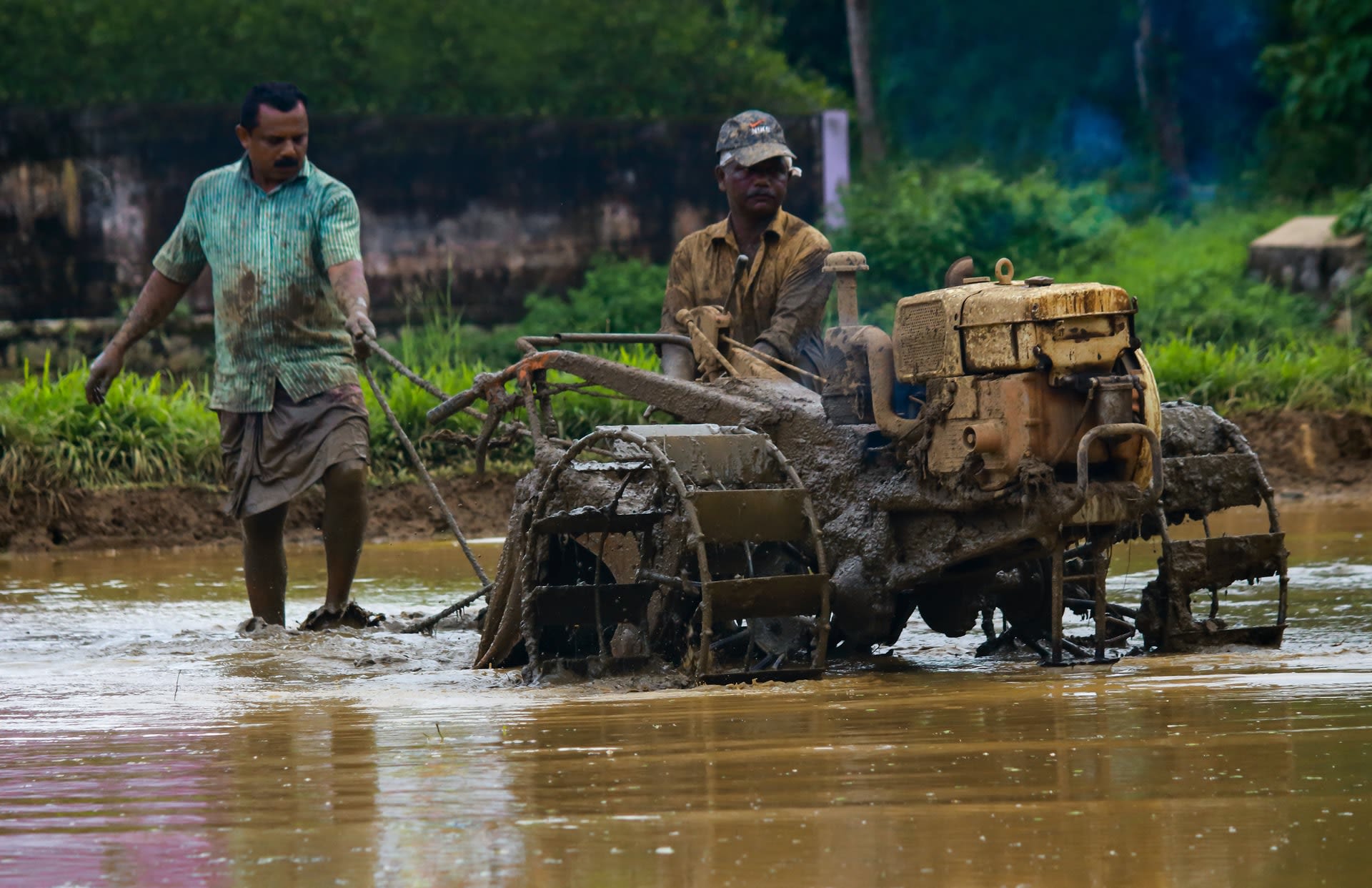
Data from Azim Premji University in south India show that 37 percent of farmers in the country were unable to harvest at the height of the pandemic, while an estimated 37 percent of the harvest was sold at reduced prices. (Photo by Nandhu Kumar in Kerala, India)
Data from Azim Premji University in south India show that 37 percent of farmers in the country were unable to harvest at the height of the pandemic, while an estimated 37 percent of the harvest was sold at reduced prices. (Photo by Nandhu Kumar in Kerala, India)
Background photo by Saikat Kundu Chowdhury on Unsplash
Surviving the ordeal
One day in the middle of the pandemic, Derapi learned from a cousin who lives in a nearby village about a livelihood program initiated by a charitable organization.
She ignored it at first, but days later she went back to her cousin and asked about the program launched by the Seva Kendra Silchar, a social service initiative of the Catholic Church in the region.
The organization teaches women various agricultural practices and offers tips on how to increase the farm’s yields.
“I attended the awareness program. I was pinning my hopes on the initiative,” Deripa later admits.
She returned several times to attend the training sessions and learned how to plant saplings, cultivate seeds, produce natural fertilizers, and sell produce in the market.
Derapi started to cultivate the small idle piece of land adjacent to her house that was covered with shrubbery.
She told her husband about the potential of growing betel nut saplings and how they could earn from it. All the couple needed was some money to purchase seeds from the market.
Derapi joined a local self-help group that was coordinated by the Church agency and got a US$50 loan. She used the amount to procure seeds.
“While my husband was doing some menial jobs to sustain the family, I became fully involved in farming,” she says.
“I sowed the seeds and did exactly the same as I was being told during the training sessions. A few weeks later, the saplings grew and were ready to be sold in the market,” shares Derapi.
The Church agency coordinated the marketing of the saplings for the farmers to get a fair price.
“I sold all my saplings for 20,000 rupees (about US$250) and earned a profit ten times more than the investment,” a smiling Derapi says.
“Since then, my entire family is in this business and our lives are treading back to normality,” she adds.

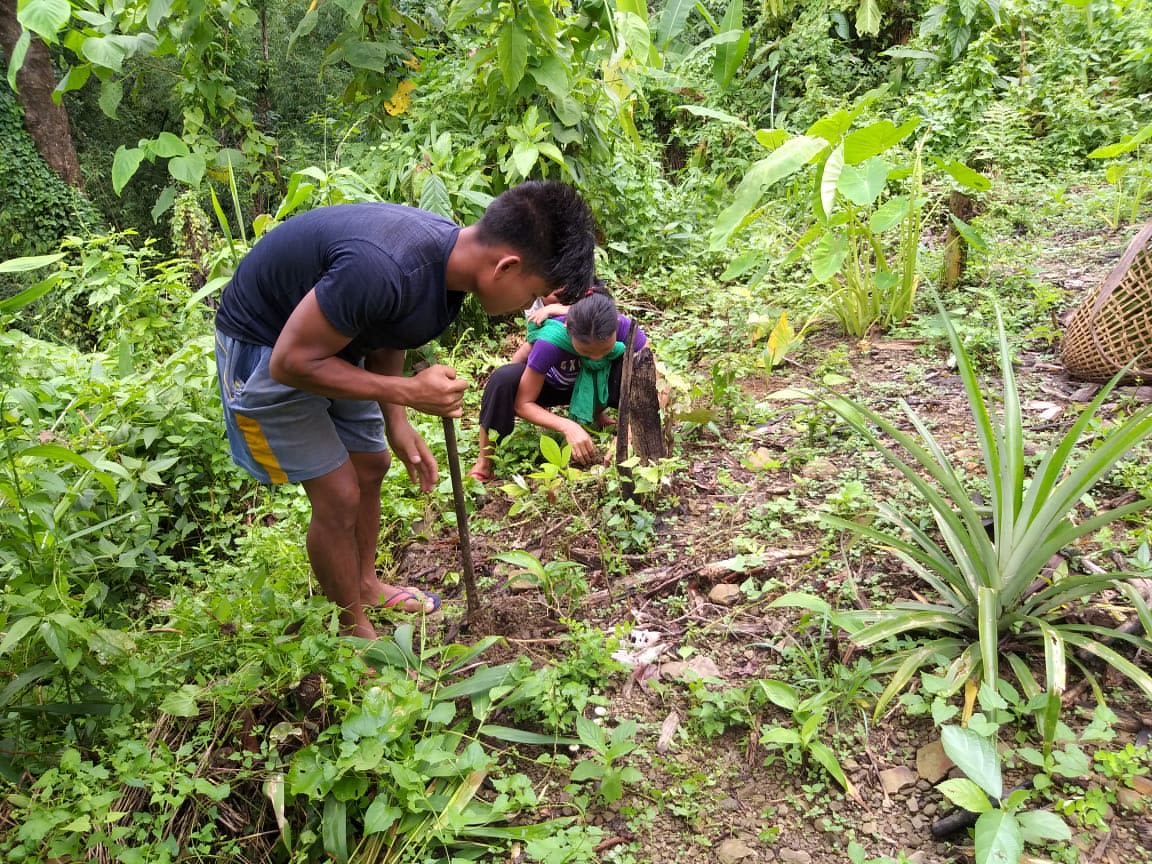
Kache Derapi tends to her batel nut saplings with her husband. (Photo by Peerzada Ummer / LiCAS.news)
Kache Derapi tends to her batel nut saplings with her husband. (Photo by Peerzada Ummer / LiCAS.news)
Empowering women
Father Paul Moonjely of Caritas India says they supported the Seva Kendra Silchar in “empowering women farmers,” adding that women have always been actively involved in farming along with men.
“However, with the massive migration to cities, farming was largely abandoned by the rural populace,” says the priest.
He says the program aims at “empowering women so as to make them economically self-reliant and get their families out of the crises that have emerged post-pandemic in the country.”
Caritas India Executive Director Father Paul Moonjely with the award for best NGO from the India Today Healthgiri Awards 2020. (Photo supplied)
Caritas India Executive Director Father Paul Moonjely with the award for best NGO from the India Today Healthgiri Awards 2020. (Photo supplied)
“We have launched this program in Assam and are planning to go to other states as well in the future,” says Father Moonjely.
He says that by actively taking part in the programs, women get confidence in participating in decision-making.
The program also linked the women farmers with the government and departments where they can avail of assistance.
It supports marginal farmers, sensitizes the community for collective action, and helps identify social and economic issues.
Background photo by Madhurjya Sarma
Sima Engtipi, a beneficiary of the program, describes Derapi’s bravery as an inspiration for women in the village to become self-reliant.
“We are seeing Derapi as a ray of hope,” says Sima, adding that more women are now enlisting in self-help groups and are attending awareness programs.
“This seems to have revolutionized our lives,” says Sima, who used to work as a housemaid in town until she lost her job during the lockdown.
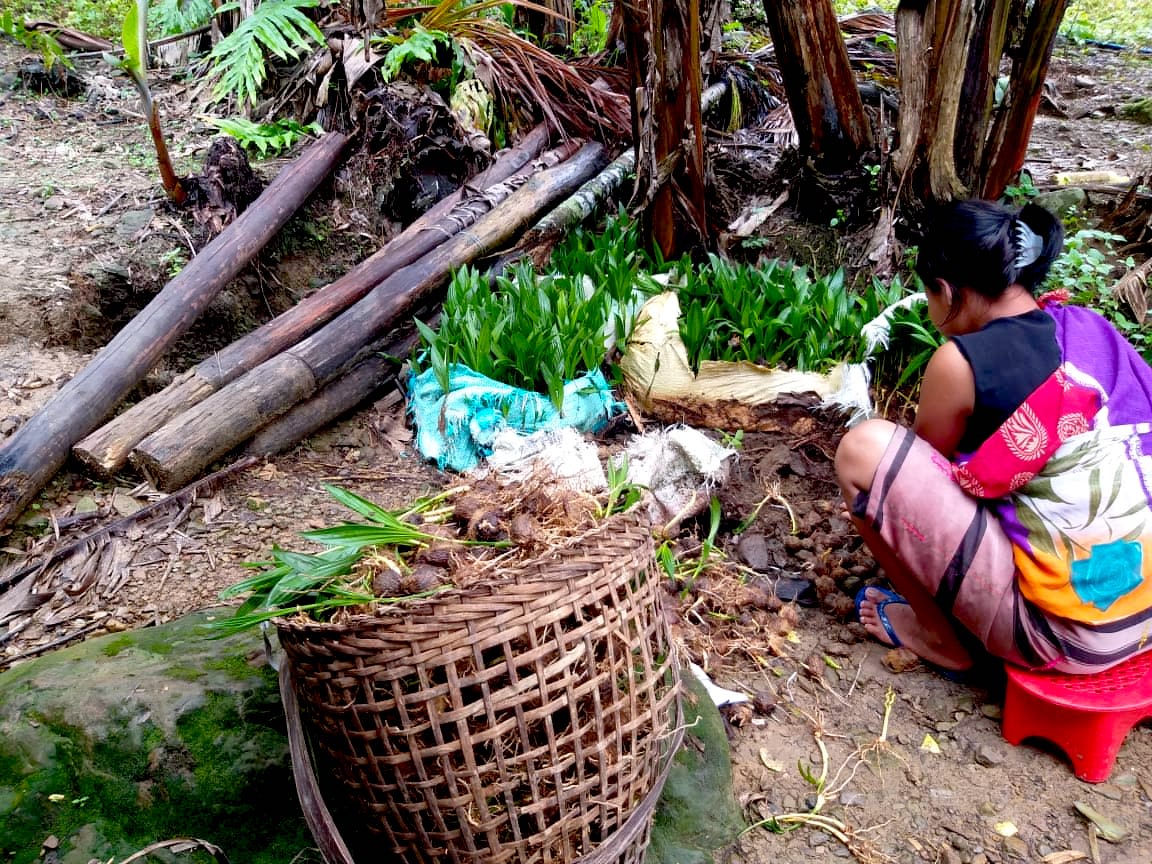
Kache Derapi preparing betel nut saplings for sale. Seva Kendra Silchar helped her and other women get a fair price at the local market. (Photo by Peerzada Ummer / LiCAS.news)
Kache Derapi preparing betel nut saplings for sale. Seva Kendra Silchar helped her and other women get a fair price at the local market. (Photo by Peerzada Ummer / LiCAS.news)
“My elder daughter is ten years old and the younger is three. There was nothing left at home. We were literally starving,” says Sima.
She says Derapi guided her and taught her how to grow organic “lady’s fingers” or Bhelendri- Abelmoschus esculentus.
She says that the new farming technique “came as a blessing from God,” adding that she is now selling vegetables at higher prices “and earning a decent living.”
“It will take time,” says Derapi as she tends her farm. “But we are already moving out of the dreadful menace of poverty and starvation.”
With generous support from missio Aachen
and
Text by Peerzada Ummer
Published March 17, 2022
© Copyright MMXXII LiCAS.news


